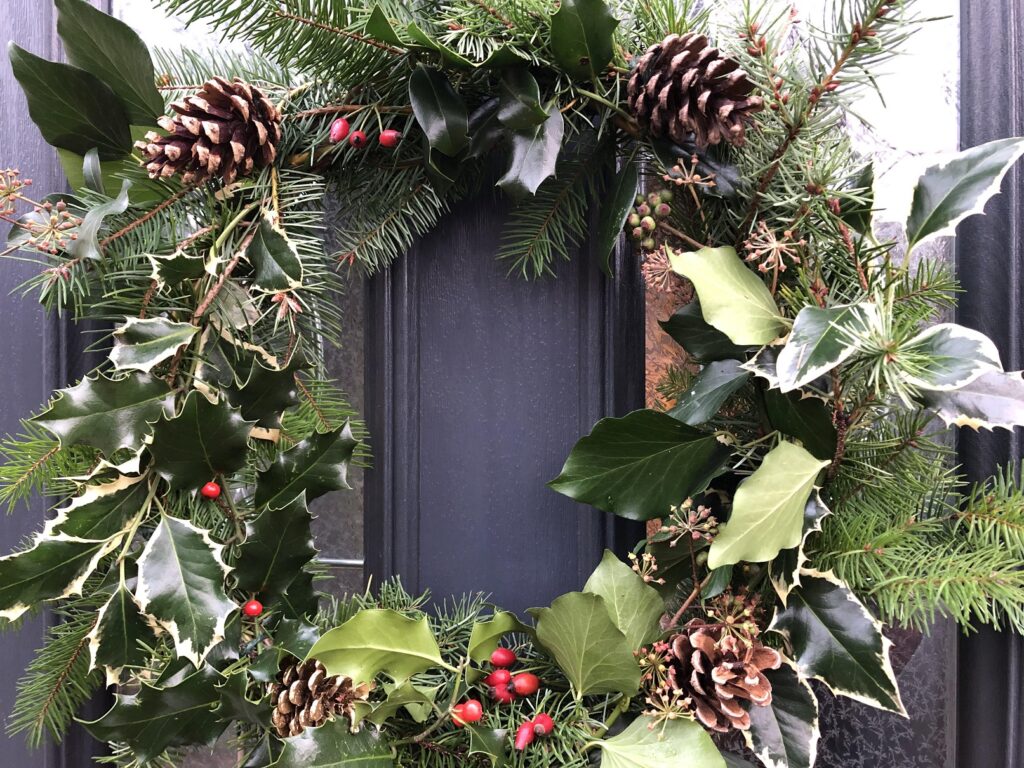
The festive countdown is not complete until I’ve decorated and hung an evergreen wreath from the front door. I love the winter ritual of cutting and gathering fir branches and sprays of holly and ivy, and the pungent citrus smell of fresh fir that stimulates my senses and invokes past Christmastime memories.
It’s also strangely satisfying to know that evergreen wreathes have been used for centuries to celebrate the winter season. In many ancient cultures, evergreen plants were seen as a sign of eternal life and vitality. They certainly add cheer to the long, dark winter.
I take two 2m willow stems and twist them around each other to form a loop and thread in the evergreen foliage, adding in pinecones and often ribbons and silver bells. Use natural twine rather than wire, making it easier to decay naturally after you take it down. I also turn my attention to making a wreath decorated with pinecones filled with a fat and birdseed mixture. During the cold winter weather birds need high-energy foods to survive and a wreath provides some protection and shelter whilst they feed.

Sometimes we need to remind ourselves that we are all part of the natural world and should follow and celebrate the seasons. The midwinter pagan festival, with roots in Norse and Celtic cultures, which marks the winter solstice of Yule, is one of the oldest celebrations in the world. Yule celebrates the return of the Sun and the cycle of the seasons, from spring to winter and eventually to spring again.
Interestingly, one of the earliest examples of the use of evergreen wreaths in pagan customs can be found in ancient Rome. During the festival of Saturnalia, a winter solstice celebration honouring the god Saturn, wreaths were seen as a symbol of the continuation of life during the dark winter months.
The winter solstice always occurs in December and in the northern hemisphere marks the 24-hour period with the fewest daylight hours of the year. This year it falls on the 21st and is known as the shortest day of the year, or the longest night of the year. Because the Earth’s elliptical orbit and tilted axis of rotation, it is the moment in the year when the Earth is tilted as far away from the Sun as it will be all year.
The word ‘solstice’ comes from the Latin solstitium meaning ‘Sun stands still’, because the apparent movement of the Sun’s path north or south stops before changing direction.
Today, whether you associate the evergreen wreath as a decoration to celebrate the advent countdown to Christmas and the holiday season, or as a symbol of the winter solstice, it is an important time in the rhythm of the year to ‘pause’, to rest and reflect. So as 2022 comes to an end, take comfort in the circular shape of the wreath and the continuance of life. Light a candle and look excitedly towards the New Year.
Happy Christmastide Greetings from Wild Heritage
